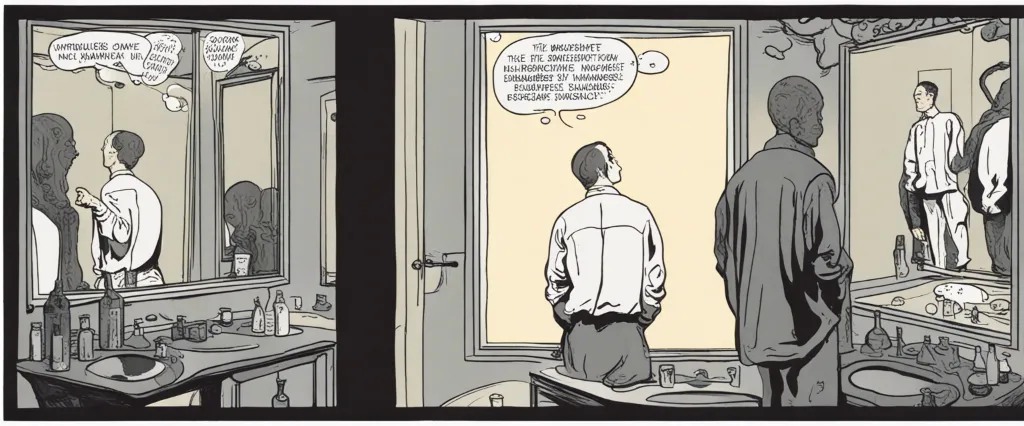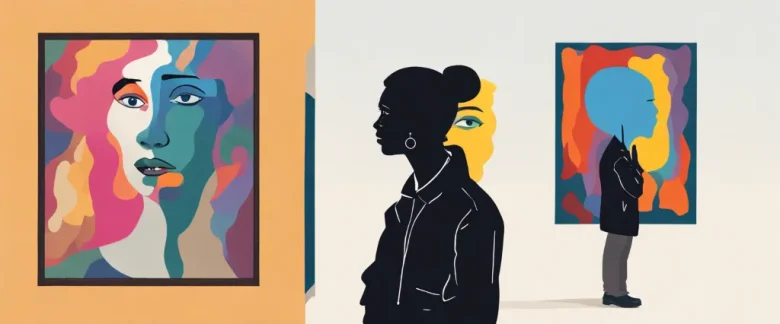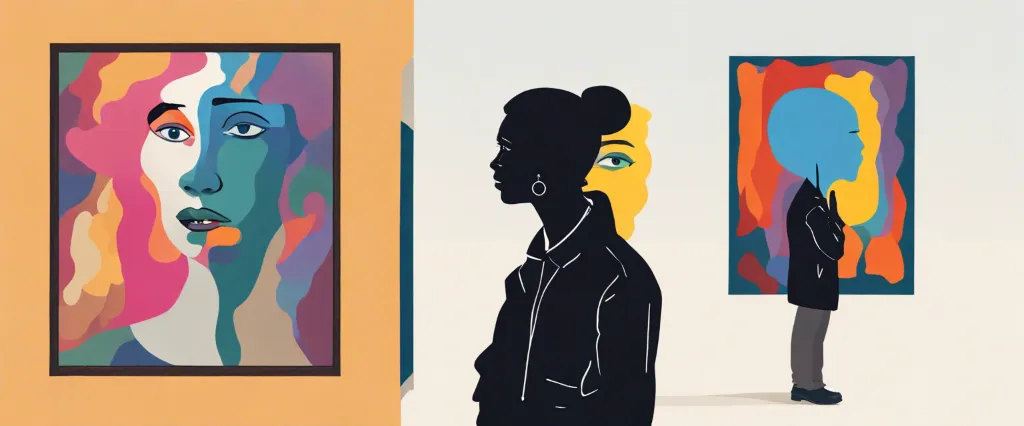In the insightful and thought-provoking book, “On Ugliness,” renowned Italian philosopher and semiotician, Umberto Eco, explores the complex nature of ugliness throughout history and its significance in shaping our cultural, artistic, and social perceptions. In this captivating exploration, Eco unravels society’s fascination with ugliness, delving into its powerful role in iconography, literature, art, and imagination. With his signature blend of erudition, wit, and intellectual depth, Eco takes readers on a journey through the centuries, examining the ever-changing meanings and interpretations of ugliness in various contexts. Through this profound analysis, Eco challenges conventional notions of beauty and ugliness, inviting us to contemplate deeper truths about human perception and societal norms.
Chapter 1: The Nature of Ugliness
Chapter 1: The Nature of Ugliness, from the book On Ugliness by Umberto Eco, explores the concept of ugliness across different historical periods and cultures. Eco begins by stating that humans have always been interested in beauty but have also been captivated by ugliness, despite its negative connotations.
He delves into the ancient Greek and Roman societies, where ugliness was often associated with moral degeneration or divine punishment. Eco notes how the Renaissance era challenged this view, as artists like Leonardo da Vinci and Francisco Goya presented ugliness as a subject of artistic expression and exploration. This shift allowed for a deeper investigation of the nature of ugliness itself.
Eco explains that ugliness is a subjective concept that differs across cultures and time periods. He highlights the uncanny relationship between beauty and ugliness, suggesting that they are intertwined because they both rely on aesthetic principles and provoke emotional responses. Furthermore, Eco reflects on how society’s perception of what is beautiful or ugly is influenced by prevailing cultural norms and values.
The author also discusses the role of ugliness in social and political contexts. He emphasizes that the depiction of ugliness in art is often used as a means of social criticism, a way to challenge society’s norms or expose injustice. By exploring the historical and cultural aspects of ugliness, Eco aims to deepen our understanding of this complex concept and encourage a broader appreciation of its significance in various spheres of human experience.
Overall, Chapter 1 of On Ugliness offers a thought-provoking overview of the multifaceted nature of ugliness, challenging preconceived notions and inviting readers to delve into the complexities and contradictions of this often neglected aspect of human aesthetics.
Chapter 2: Ugliness in Art
Chapter 2: Ugliness in Art of the book “On Ugliness” by Umberto Eco examines the concept of ugliness as conveyed in different forms of artistic expression throughout history. Eco argues that ugliness is not merely the absence of beauty but possesses its own artistic value and significance.
The chapter begins by exploring the early artistic conventions that idealized beauty during the Renaissance. Gradually, artists began to challenge these established norms, turning to the representation of ugliness as a means of expressing a more genuine human experience. Eco highlights the shift from the portrayal of beauty to the inclusion of grotesque elements, such as distorted bodies and monstrous creatures, in Renaissance art.
Moving forward, the chapter delves into the complex relationship between ugliness and the sublime. Eco emphasizes that ugliness often elicits strong emotional responses and can even evoke a sense of awe and wonder when merged with the concept of the sublime. He examines artistic works, such as Francisco Goya’s “The Disasters of War” and Hieronymus Bosch’s “The Garden of Earthly Delights,” to illustrate how artists have used ugliness to convey a deeper understanding of the human condition and to challenge societal norms and structures.
Furthermore, the chapter explores the notion of the anti-aesthetic, where artists deliberately seek to provoke discomfort and confront the audience by presenting repulsive or offensive subject matters. Eco references modern artists like Francis Bacon and Cindy Sherman, examining their use of ugliness to critique societal values and ideals.
In conclusion, Eco posits that ugliness in art serves a vital purpose by broadening our aesthetic sensibilities and reflecting the diverse aspects of human existence. By breaking away from conventional beauty standards, artists have used ugliness as a powerful tool to challenge societal norms, express their creativity, and provoke insightful reflections on humanity’s depths and complexities.
Chapter 3: Ugliness and the Body
Chapter 3 of Umberto Eco’s book “On Ugliness” delves into the concept of ugliness in relation to the human body. Eco explores various historical and cultural perceptions of ugliness, offering a comprehensive analysis of this complex subject.
Eco begins the chapter by examining the classical Greek concept of beauty, which emphasized a balance of harmony, proportion, and symmetry in the human body. He contrasts this with the concept of ugliness, which was associated with deformities or abnormalities that deviated from these ideals. Using examples from sculptures and ancient texts, Eco highlights how ancient civilizations considered certain physical traits, such as unibrows or large noses, as indicative of ugliness.
Furthermore, the chapter explores the significance of ugliness in religious art, particularly in Christianity. Eco examines various icons and representations of saints with disfigured or wounded bodies, emphasizing how these images were meant to evoke empathy and connect believers with their suffering. He also touches on the medieval fascination with grotesque representations of human bodies, considering how these distorted figures were used to convey moral lessons or provoke contemplation.
Eco later introduces the concept of the monstrous body, referencing literary works and artistic depictions that portray a fusion of human and animal forms or grotesque bodily abnormalities. He discusses the cultural fascination with the abject and the grotesque, explaining how it challenges traditional notions of beauty and provokes a sense of discomfort or revulsion.
Overall, Eco’s examination of ugliness and the human body in Chapter 3 provides a comprehensive exploration of the historical and cultural perspectives on this complex aesthetic concept. Through the analysis of art, literature, and religious imagery, Eco offers readers a deeper understanding of how beauty and ugliness are defined, making us question our own preconceived notions and challenging us to rethink our perception of the body.
Chapter 4: Ugliness and the Other

Chapter 4 of “On Ugliness” by Umberto Eco delves into the concept of ugliness and its connection to the “Other.” The chapter explores how the idea of ugliness has been shaped by society throughout history and how it has often been associated with what is considered unfamiliar or different.
Eco begins by highlighting the link between ugliness and fear, showing how societies tend to reject and marginalize what they perceive as ugly or strange. He discusses various historical examples, such as the spectacle of deformities in ancient Rome and the use of monstrous imagery in medieval art, to demonstrate how cultural attitudes towards ugliness have evolved over time.
The chapter also examines the role of the “Other” in shaping perceptions of ugliness. Eco argues that ugliness often becomes a means of defining and excluding those who do not fit societal norms. This exclusion is then justified through the labeling of the Other as “ugly” or “monstrous.” By examining works of art and literature, Eco shows how the depiction of the Other as ugly has functioned as a tool for maintaining power dynamics and societal hierarchies.
Moreover, Eco explores the paradoxical nature of ugliness, highlighting how it can simultaneously repulse and fascinate. He argues that there is a fine line between what is considered ugly and what is considered beautiful, as these concepts are constantly shifting and subjective.
In Chapter 4, Umberto Eco provides a thought-provoking examination of the intricate relationship between ugliness, the Other, and societal perception. He challenges readers to question their own biases and preconceived notions about what they consider ugly or beautiful, ultimately inviting reflection on how these notions shape our understanding of the world.
Chapter 5: Ugliness and Evil
Chapter 5 of “On Ugliness” by Umberto Eco delves into the intertwining concepts of ugliness and evil throughout history. Eco examines how the perception of ugliness has often been associated with moral judgment, casting the ugly as evil or sinful. He explores various forms of ugliness, ranging from physical deformities to grotesque representations of evil in art.
Eco begins by linking ugliness and evil to the realm of the demonic, drawing on religious beliefs throughout different cultures. He examines how ugliness has been associated with temptation, sin, and the devil, and how this connection is often portrayed in religious art. From medieval representations of demons to Goya’s dark portrayals of witchcraft, ugliness becomes a visual manifestation of evil itself.
The chapter then moves on to explore the aesthetics of ugliness, highlighting its subjective nature and cultural variations. Eco argues that what society deems ugly is often a reflection of its moral values and social norms. He discusses the evolution of beauty standards, which have, at times, perpetuated harmful ideologies and discrimination against those who do not fit the conventional mold.
Moreover, Eco touches on the social construction of ugliness, where marginalized groups throughout history, such as the disabled or mentally ill, have been stigmatized and labeled as ugly. He examines the cultural significance of freak shows and how they served as a means to exploit and dehumanize individuals seen as unattractive or different.
In conclusion, Chapter 5 of “On Ugliness” presents a thought-provoking exploration of the connection between ugliness and evil. Eco highlights the moral judgments and subjective nature inherent in the perception of ugliness throughout history, while also shedding light on its destructive consequences for those deemed “ugly” by societal standards.
Chapter 6: Ugliness and Kitsch
Chapter 6 of Umberto Eco’s book “On Ugliness” titled “Ugliness and Kitsch” delves into the concept of kitsch, exploring its relationship with ugliness, taste, and mass culture. Kitsch refers to mass-produced, sentimental art or objects that appeal to popular taste, often characterized by their sentimental, cloying, and overly decorative nature.
Eco argues that kitsch represents a mass-produced version of ugliness, as it uses superficial and clichéd sentiments to evoke an emotional response, devoid of any real depth or authenticity. Kitsch emerges as a mainstream vehicle to satisfy the masses’ desire for the experience of beauty; it offers a simplified and mass-marketed version of beauty that lacks complexity and true artistic value.
The chapter further explores the relationship between taste and kitsch, asserting that kitsch is a by-product of the homogenization of taste. It is produced and consumed by those lacking refined or discerning taste, presenting a simplified and standardized aesthetic that appeals to the lowest common denominator.
Furthermore, Eco delves into the role of mass culture in perpetuating kitsch. He explains how the industrial revolution and the rise of modern technologies have accelerated the production and dissemination of kitsch, making it more accessible and prevalent in society. The mass media, advertising, and consumerism have all contributed to the proliferation and normalization of kitsch, shaping public tastes and desires.
In conclusion, Eco explores the relationship between kitsch and ugliness, highlighting how kitsch represents a simplified, mass-produced version of ugliness that is designed to appeal to the masses lacking refined taste. He outlines the impacts of mass culture and modern technologies in promoting and perpetuating kitsch, ultimately shaping popular notions of beauty and aesthetics.
Chapter 7: Ugliness and Humor
Chapter 7 of the book “On Ugliness” by Umberto Eco explores the complex relationship between ugliness and humor. Eco begins by recognizing that humor often relies on making fun of something or someone, which frequently involves highlighting their physical or moral ugliness. He notes that this can be seen in characters like Quasimodo, the Hunchback of Notre Dame, who can evoke both sympathy and laughter due to his physical appearance.
The chapter discusses how humor can be employed as a coping mechanism to deal with difficult or uncomfortable situations, as well as a way to challenge social norms and authorities. Eco argues that humor often functions as a defense mechanism, allowing individuals to distance themselves from ugliness or to alleviate the anxiety provoked by it. It is through humor that ugliness is tamed, allowing people to maintain a sense of control over that which they find reprehensible or unsettling.
Eco explores various forms of humor related to ugliness, including grotesque humor, which involves exaggerating and distorting physical features, and dark humor, which confronts the limitations of human existence, suffering, and death. He also delves into the role of caricature in humor, where physical features are exaggerated and distorted for comedic effect.
Ultimately, Eco proposes that humor can be a powerful tool for highlighting the paradoxical and contradictory aspects of ugliness, enabling individuals to temporarily escape the discomfort it evokes. By laughing at ugliness, people can cope with their fears and anxieties, allowing them to navigate the complexities of human existence with a sense of levity.

Chapter 8: The Beauty of Ugliness
Chapter 8: The Beauty of Ugliness of Umberto Eco’s book On Ugliness explores the concept of the grotesque and its artistic representation throughout history. Eco introduces the idea that ugliness possesses its own unique beauty, challenging conventional notions of aesthetics.
Eco begins by discussing the origins of the grotesque in art and literature. He refers to the Roman poet Horace, who described it as a mixture of qualities that excite laughter and horror. This juxtaposition of laughter and horror creates a tension that intrigues and captivates the audience. Eco argues that this fascination with the grotesque reflects the complexity of human emotions and desires.
The chapter then delves into the portrayal of monstrous and deformed creatures in art and literature, from ancient times to contemporary works. Eco explores how the grotesque allows artists to push the boundaries of representation and challenge societal norms. He highlights artworks such as Hieronymus Bosch’s The Garden of Earthly Delights and Francisco Goya’s The Sleep of Reason Produces Monsters as examples of the grotesque. These masterpieces display strange and unsettling figures, often combining human and animal characteristics.
Eco also discusses the role of the grotesque in religious imagery. He argues that the inclusion of disturbing and repulsive elements in religious art is intended to provoke reflection and contemplation. The grotesque serves as a reminder of the imperfections and flaws inherent in humanity, thereby encouraging spiritual introspection.
Overall, Chapter 8: The Beauty of Ugliness invites readers to appreciate the unconventional and unsettling aspects of art. Eco challenges our preconceived notions of beauty, suggesting that ugliness holds its own allure and significance in the artistic realm.
After Reading
In conclusion, Umberto Eco’s book “On Ugliness” offers a profound exploration of the concept of ugliness throughout history, art, and culture. Through a comprehensive analysis of various artistic representations and philosophical perspectives, Eco delves into how the perception of ugliness has evolved and been shaped by societal norms. By challenging our preconceived notions and inviting us to confront our own aesthetic biases, Eco highlights the significance of ugliness as a crucial aspect of human existence. Ultimately, “On Ugliness” serves as a thought-provoking examination of beauty’s complex relationship with its polar opposite and leaves readers with a heightened appreciation for the multifaceted nature of aesthetics in our world.
1. “The Anatomy Lesson” by Philip Roth: This novel explores the concept of ugliness in a different way, delving into the secrets and dark sides of humanity. Roth’s masterful storytelling and introspective characters make for an engaging and thought-provoking read.
2. The Picture of Dorian Gray” by Oscar Wilde: Similar to Eco’s exploration of ugliness, Wilde’s classic novel examines the relationship between outer appearance and inner corruption. It delves into the depths of human vanity and the devastating consequences it can have.
3. “Gomorrah” by Roberto Saviano: This non-fiction work exposes the ugly truth behind organized crime in Naples, Italy. Saviano’s firsthand experience and investigative journalism shed light on the violence, corruption, and ugliness that permeate the criminal underworld.
4. “A Clockwork Orange” by Anthony Burgess: Set in a dystopian society, this novel explores the inherent ugliness of violence and the attempt to control and reform human nature. Burgess creates a memorable protagonist and delves into themes of morality, free will, and the darkness that lurks within us all.
5. “The Painted Bird” by Jerzy Kosiński: This highly unsettling and haunting novel follows a young boy’s journey through war-torn Eastern Europe during World War II. Kosiński vividly depicts the ugliness and brutality of war, exploring the depths of human depravity and the impact it has on the individual psyche.
These recommendations offer diverse perspectives on ugliness, whether through examining the corrupt nature of society, the darkness within individuals, or the devastating consequences of violence and war. Each book promises to be a thought-provoking read, challenging the reader to reflect on the dark underbelly of human existence.




